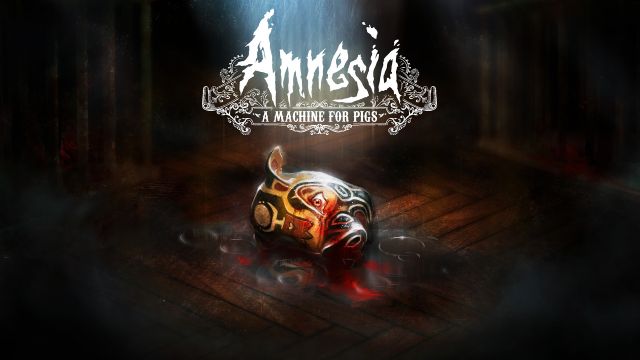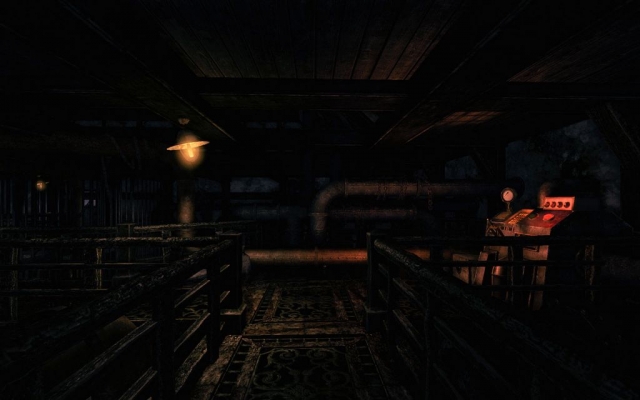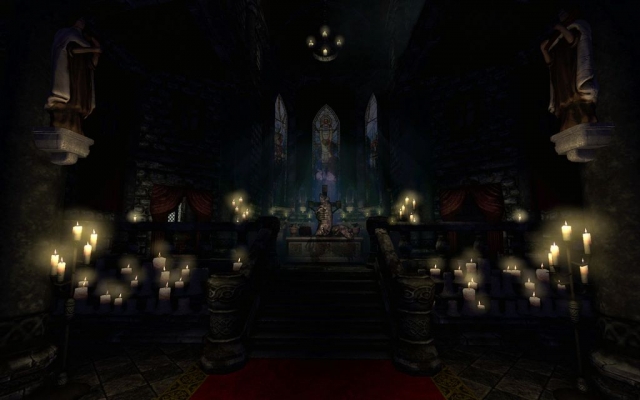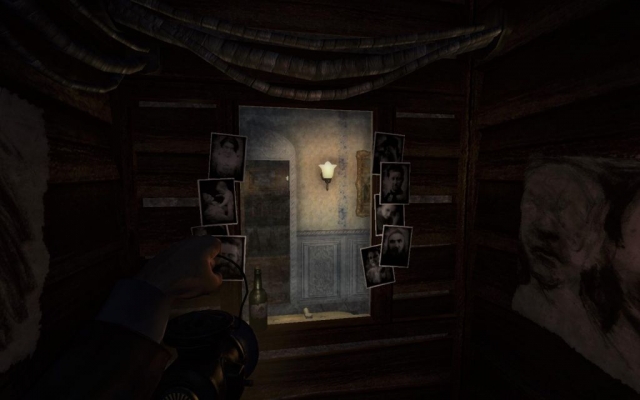Amnesia: A Machine for Pigs

The Good: Complex, immersive story and atmosphere
The Bad: Linked to a not very good gaming experience
The Ugly: Some irritatingly fussy puzzles
It’s kind of fascinating reviewing Amnesia: A Machine for Pigs and Outlast right on top of one another. The two games are targeted towards similar audiences, both providing thrills and chills in a first-person non-shooter adventure format. Both games lack weaponry of any kind, neither has a player inventory, and both make heavy use of documents and notes strewn about to advance the plot. But that is where the similarity ends. While Outlast went for the cheaper almost slasher flick scares, A:aMfP is more cerebral. To make a comparison that probably no one will understand, it is like comparing the first Alien movie to the second movie Aliens. In Alien you rarely got a good look at the monster until near the end of the film. There were oodles of tension in distant horrific sounds and the feeling that characters were definitely being stalked, but glimpses of the beast were few and far between and never in a well-lit room. Aliens in contrast was like an arcade game with dozens of aliens jumping out all over the place frequently in good lighting. From a horror perspective, the former is harder to pull off, portents of menace as opposed to a guy waving a rusty butcher knife in your face, and A:aMfP is only sometimes successful in that regard. With long stretches between enemy sightings and minimal stuff to interact with in the environment, much of the game’s five or so hour length consists of nothing more than working your way through a steampunk maze of pipes and infernal machines spinning valves and pushing buttons.
The strength of A:aMfP is unquestionably in its plotline. Though I have not played the previous title (Amnesia: The Dark Descent), advertising indicates that A:aMfP is not so much of a sequel as distantly related events taking place in the same timeline. You play a man who wakes up in a Victorian mansion wondering where your children are and so search for them. During your search you come across recording devices (old gramophones) which, reminiscent of Bioshock, you can play and hear characters discussing their philosophies and how it relates to probable unwholesome events taking place in the factory underneath the creepy mansion. The recordings are augmented by occasional phone calls from a mysterious stranger who claims he is helping you recover your children, and documents you find as well as journal entries you write about your surroundings. The resulting plot is interwoven and complex, and you may find that you have to think about it a little bit, because at some points the convoluted language of the notes and recordings perhaps makes things more confusing than necessary. Still, if you stick with it and pay attention, what begins as a man desperately seeking his children takes a much darker and more enriching turn.
Some of the puzzles are unnecessarily fussy. Midway through the game I need to stoke up a couple of furnaces. There is a coal shovel and a heap of coal right there next to the furnace, but I’m unable to grab the shovel or move the coal. I have to find specific big lumps of coal that I can interact with to load the furnaces. The game becomes a hunt for these special coal pieces when I’m literally hip deep in coal. Similarly, early on you have to find your way through a church, and it’s quite clear you need to find a secret passage activated by rotating some candleholders, but one of them is missing. No big deal, I figure, I’m in a church loaded to the gills with candles of every shape and size, but I can’t interact with any of them – they’re all just fancy, flickering wallpaper. I have to search in a storeroom for the one specific candle the game intends me to use. And while I’m on that topic, the amount of stuff you can interact with in the game in general is sparse compared to most titles today. I can pick up and throw a lot of chairs to no effect. I can open and close desk drawers which 99.99% of the time are empty or contain a useless item like a pair of glasses or some books. With the exception of the aforementioned chairs, I can’t move the furniture (except when the game has a reason to let me move it). I can almost exclusively only open doors which lead somewhere; there are few if any doors that simply open on a room that doesn’t relate to either the plot or navigating the maze – regions that would make the area feel more like a real space and not a scant map drawn to minimize the work of laying it out.
Look, I’m smack dab in the center of the demographic this game is aimed at. I watch more indie horror movies than any grown man should (I’ve even seen Rubber for crying out loud). And for large portions of time A:aMfP didn’t do it for me. The first hour or so was some of the most difficult game review playing I’ve ever done, because literally nothing happens. At first that’s actually kind of cool. What could lie behind any door? You don’t know, and there’s tension there. Then after the 80th door with nothing, even down into the factory where some really nice artwork and stuff has been done, I admit that I was bored, really bored. Then I got my first glimpse of the, oh, I’ll call them pigstrosities, and that was exciting. They have an interesting AI, in contrast to Outlast where the enemies run right at you. These animals use their sense of smell, so they stop and sniff, and turn towards you, and it’s dark and you’re trying to back up or find a safe route – scary, in a videogame way. Then it’s maybe thirty minutes of more switch flipping until you see the next one. In A:aMfP the balance is off. There’s too much wandering around admiring the scenery and not enough stuff to do or scares to go around. But the plot is so good I almost wish they had released it as a movie instead of a game.
Reviewed By: Phil Soletsky
Publisher: Frictional Games
Rating: 65%
——————————————————————————–
This review is based on a digital copy of Amnesia: A Machine for Pigs for the PC provided by Frictional Games.
Default Gallery Type Template
This is the default gallery type template, located in:
/home/fkrueger/www.game-over.net/content/wp-content/plugins/nextgen-gallery/products/photocrati_nextgen/modules/nextgen_gallery_display/templates/index.php.
If you're seeing this, it's because the gallery type you selected has not provided a template of it's own.
 Game Over Online
Game Over Online

